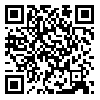سه شنبه 1 مهر 1404
دوره 15، شماره 4 - ( 7-1404 )
جلد 15 شماره 4 صفحات 322-307 |
برگشت به فهرست نسخه ها
Download citation:
BibTeX | RIS | EndNote | Medlars | ProCite | Reference Manager | RefWorks
Send citation to:



BibTeX | RIS | EndNote | Medlars | ProCite | Reference Manager | RefWorks
Send citation to:
Sakinepoor A, Degens H, Letafatkar A, Darabseh M Z, Moradi F, Mazidi M. The Effect of Exercises on Flexion Relaxation in Adolescents With Forward Head Posture and Rounded Shoulders. PTJ 2025; 15 (4) :307-322
URL: http://ptj.uswr.ac.ir/article-1-678-fa.html
URL: http://ptj.uswr.ac.ir/article-1-678-fa.html
The Effect of Exercises on Flexion Relaxation in Adolescents With Forward Head Posture and Rounded Shoulders. فصلنامه فیزیک درمانی. 1404; 15 (4) :307-322
چکیده: (524 مشاهده)
Purpose: Previous research indicates a positive correlation between the forward head and forward shoulder angle (FHRSA) and the maintenance of a flexed neck position over an extended period, leading to static stress on the musculoskeletal system. This study aimed to ascertain the benefits of a course of training on flexion-relaxation in male adolescents with forward head and forward shoulder postures.
Methods: Sixty males with FHRSA were selected for the current study and split into two groups: Corrective exercise (CE) (n=30) and non-treatment group (n=30). The intervention group underwent training. Exercises were performed twice a week for approximately 20-30 minutes, while the control group received advice on how to correct posture. Electromyography data of the upper extremities of 60 participants with FHRSA (control=30, CE=30) were recorded. At the same time, participants in both groups performed the cervical flexion–relaxation task under two different conditions (before and after the intervention). The forward head and shoulder angles were evaluated using side photography. A mixed repeated-measures analysis of variance (ANOVA) was utilized for data analysis.
Results: Significant time×group interactions were observed for electromyography (P<0.05), indicating that the response differed between the control and CE groups. CE, but not the control condition, was accompanied by a decrease in the onset time of muscle activation, indicative of improved flexion-relaxation (P<0.05). CE, but not so in the non-treatment group, resulted in a decreased forward head angle (FHA) (F [12, 0], P<0.001, ղp²=0.172) and rounded shoulder angle (RSA) (F[15, 4], P<0.001, ηp²=0.211).
Conclusion: CE can improve posture and flexion relaxation in individuals with forward head and rounded shoulders. Additionally, CE can improve posture and reduce muscle imbalances in individuals with FHRSA.
Methods: Sixty males with FHRSA were selected for the current study and split into two groups: Corrective exercise (CE) (n=30) and non-treatment group (n=30). The intervention group underwent training. Exercises were performed twice a week for approximately 20-30 minutes, while the control group received advice on how to correct posture. Electromyography data of the upper extremities of 60 participants with FHRSA (control=30, CE=30) were recorded. At the same time, participants in both groups performed the cervical flexion–relaxation task under two different conditions (before and after the intervention). The forward head and shoulder angles were evaluated using side photography. A mixed repeated-measures analysis of variance (ANOVA) was utilized for data analysis.
Results: Significant time×group interactions were observed for electromyography (P<0.05), indicating that the response differed between the control and CE groups. CE, but not the control condition, was accompanied by a decrease in the onset time of muscle activation, indicative of improved flexion-relaxation (P<0.05). CE, but not so in the non-treatment group, resulted in a decreased forward head angle (FHA) (F [12, 0], P<0.001, ղp²=0.172) and rounded shoulder angle (RSA) (F[15, 4], P<0.001, ηp²=0.211).
Conclusion: CE can improve posture and flexion relaxation in individuals with forward head and rounded shoulders. Additionally, CE can improve posture and reduce muscle imbalances in individuals with FHRSA.
نوع مطالعه: پژوهشي |
موضوع مقاله:
آسیب شناسی ورزشی و حرکات اصلاحی
دریافت: 1403/6/29 | پذیرش: 1403/10/15 | انتشار: 1404/7/26
دریافت: 1403/6/29 | پذیرش: 1403/10/15 | انتشار: 1404/7/26
| بازنشر اطلاعات | |
 |
این مقاله تحت شرایط Creative Commons Attribution-NonCommercial 4.0 International License قابل بازنشر است. |



